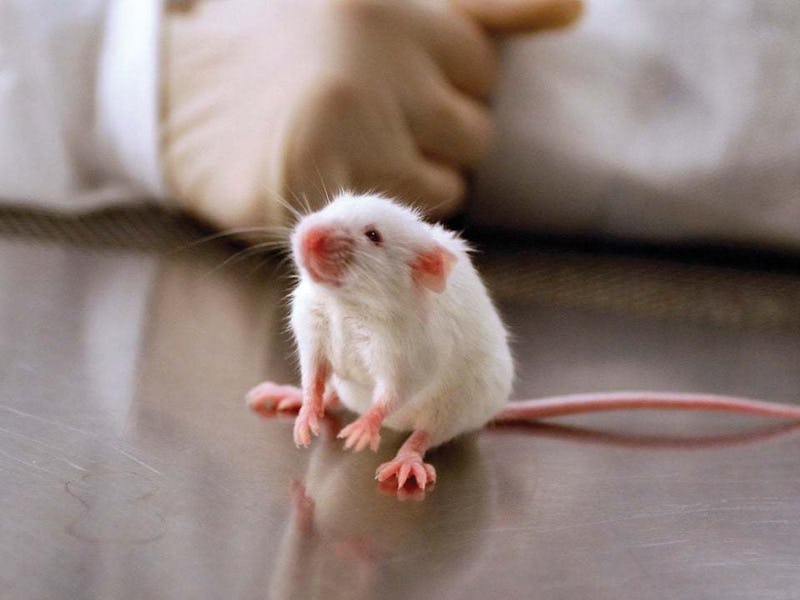Mice have been integral to uncovering some major modern scientific mysteries, ranging from PTSD, cocaine addiction, aging reversal, and more.
But a groundbreaking new study in the journal Nature suggests that these study conclusions aren’t necessarily true, thanks to a common tail-holding technique that researchers use when studying mice. Holding mice by the tail is a “source of stress that may impair reliability of test responses”, the study says.
“Picking them up by the tail is quick, and people think this will avoid them getting bitten, so this has become the standard method,” Prof. Jane Hurst of the University of Liverpool and a lead author of the study, tells Inverse. “The tail technique doesn’t hurt mice, but it does make them anxious. To a mouse, being lifted by the tail and carried backwards feels very much like being caught by a predator.”
The researchers stumbled on the problems of the mouse tail grabbing-and-dropping technique when they analyzed mice responses to the urine of the opposite sex. Previous research has indicated that mice find the pee of the opposite sex attractive, but these mice, curiously, weren’t exhibiting this behavior. The mice would instead happily sniff the urine stimulus only if they’d crawled toward it through a tunnel.
When the mice were picked up by the tail and dropped near the stimulus as is commonly accepted practice, however, they were almost totally unwilling to inspect it.
It’s not the tail, Hurst says; it’s stress. An apprehensive mouse avoids learning a skill or investigating a stimulus, fundamentally altering the results. Researchers may interpret that avoidance as an indication of the mouse’s abilities, but as Hurst explains, the behavior exhibited is actually “due to the way they were handled rather than [the fact that] they could not perform the task.”
Compounding the problem is the fact that researchers might interpret the mice’s restraint as cause to increase sample size. They might decide to “use a lot more animals to find ones that will […] show some response,” Hurst points out. “Using handling methods that do not provoke anxiety will improve the sensitivity of tests and allow researchers to get more information out of their experiments while needing fewer animals.”
Hurst’s research team has tried to develop better handling methods using a plastic tunnel with a handy little tutorial you can watch. They place it near the mice, then gently use their hands to form barriers to guide the animals inside. Next, they hold the tunnel at floor level and tipped it backward into the testing zone. Mice can also be lifted on an open hand, although they need time to get comfortable with that tactic before they’ll refrain from jumping ship.
a still from the video tutorial showing how to properly handle mice
This new research implies that all previous mouse behavioral experiments — or at least, the studies which involved picking up mice by the tail, which is a ton — are flawed. No experiment is perfect, but if mishandling mice affected other results as significantly as Hurst and Gouveia’s, we need a major reevaluation, and possibly revision, of past research.
Hurst is hoping this study will also encourage us to reassess our treatment of other animals in scientific research. “All animals need to be handled in ways that they find non-aversive and do not promote anxiety,” Hurst says. For a lot of scientific endeavors, that starts with not grabbing a mouse by its tail.
